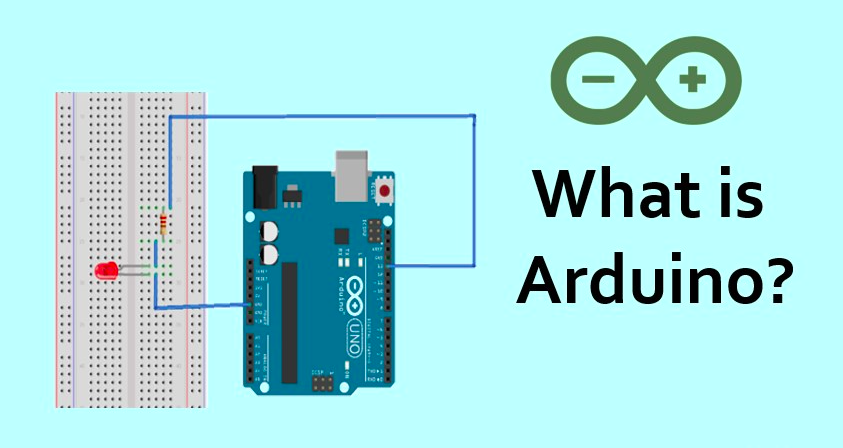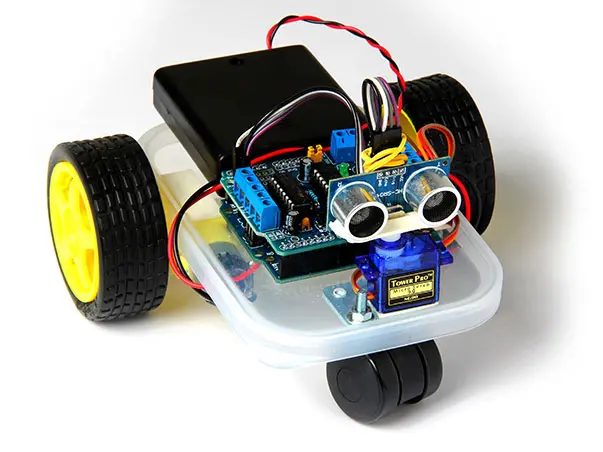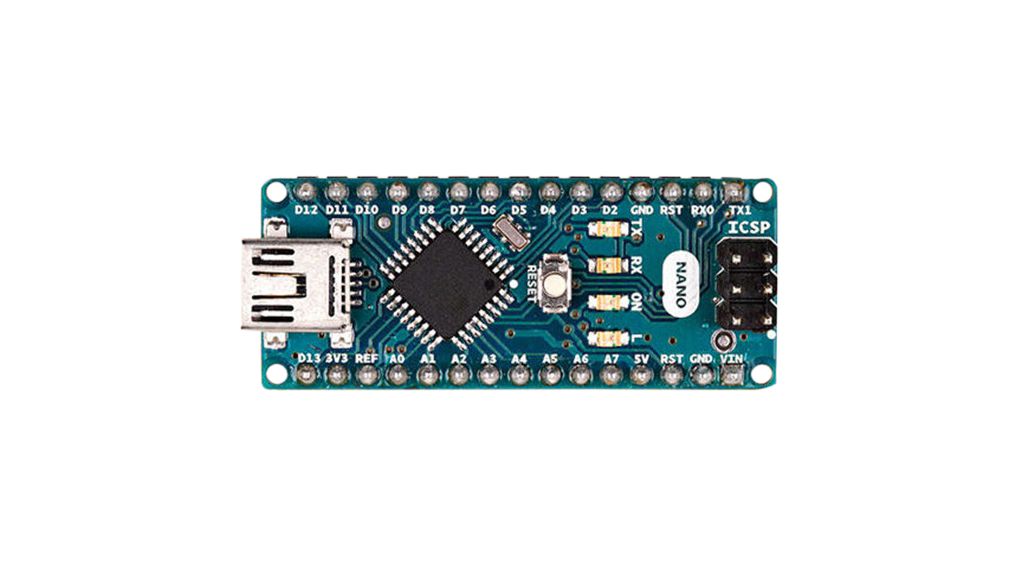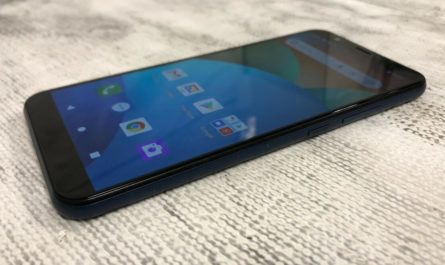Arduino is a powerful tool that allows you to create and control electronic projects. Its easy-to-use components and open-source platform make it perfect for beginners and experts. However, Arduino is not without its pitfalls. If you’re starting with arduino, it can be easy to make mistakes that could ruin your project or even damage your board. To help you avoid some of the most common pitfalls, this post will cover 7 of the most common mistakes people make while using Arduino and how to avoid them.
Contents
- 1 What is Arduino?
- 1.1 Arduino Platform: Pioneering Innovation in Electronics
- 1.2 What are the 7 common mistakes?
- 1.3 Arduino Board Features
- 1.4 How To Avoid Making These Mistakes?
- 1.5 Arduino Nano: Miniature Marvels for Maximum Innovation
- 1.6 Arduino Mega: Unleashing Mega Potential in Your Projects
- 1.7 Arduino Download: Unleashing the Power of Creative Coding
- 1.8 Arduino Is Not A Toy
- 1.9 Some Common Mistakes Made When Using Arduino Include:
- 2 Conclusion:
What is Arduino?
Arduino is an open-source electronics platform based on simple, easy-to-use hardware and software. It consists of a microcontroller board and a development environment for writing software for the board. The arduino platform was designed to make it easy for hobbyists and engineers to build interactive electronic projects without extensive knowledge of electronics or programming.

The Arduino board can be programmed using the Arduino Integrated Development Environment (IDE) based on the Processing language. The Arduino board can be connected to various sensors, actuators, and other devices to create a wide range of projects, from simple LED blinkers to complex robots and Internet of Things (IoT) systems.
The Arduino Uno stands as the quintessential embodiment of innovation within the realm of microcontrollers. More than a circuit board with components, it is a gateway to a world where ideas materialize into electronic realities. The Uno’s compact design belies its power, featuring a versatile array of digital and analog pins that serve as conduits for creativity.
Whether you’re a beginner navigating the basics of coding and electronics or an experienced tinkerer pushing the boundaries of innovation, the Arduino Uno is a steadfast companion. With its open-source nature, it not only invites exploration but actively encourages it, fostering a global community of makers who continuously redefine the possibilities of what can be achieved with a modest yet mighty piece of technology. The Arduino Uno is not just a microcontroller; it’s an emblem of empowerment, a tool that transforms aspirations into tangible circuits of ingenuity.
Arduino Platform: Pioneering Innovation in Electronics
The Arduino platform stands as a beacon in the realm of electronics, epitomizing accessibility and innovation. At its core lies a suite of open-source hardware and software tools that democratize the creation of interactive electronic projects. Arduino boards, with their modular designs and a plethora of shields, serve as the canvas for creative minds to paint the intricate strokes of their ideas.
The Arduino Integrated Development Environment (IDE), a user-friendly programming interface, simplifies the coding process, allowing enthusiasts of all skill levels to craft programs that breathe life into circuits. What makes Arduino truly powerful is its global community, a diverse ecosystem where knowledge flows freely. From students taking their first steps into coding to seasoned engineers pushing the boundaries of technology, Arduino unites them all, fostering a culture of collaboration and continuous exploration.
Beyond being a mere microcontroller platform, Arduino represents a paradigm shift in the way we approach technology. Its open-source philosophy dismantles barriers to entry, making electronics and programming accessible to anyone with a curious mind. Arduino is a catalyst for learning, providing a hands-on experience where theory meets practice. The diversity of Arduino boards, from the compact Nano to the robust Mega, ensures that there’s a perfect fit for every project.
The platform’s adaptability is mirrored in its vibrant community, a collective of makers, educators, and hobbyists who share a passion for innovation. Arduino is not confined to the language of circuits and code; it’s a gateway to a world where creativity knows no bounds. With every upload of code and connection of components, the Arduino platform invites individuals to participate in the ever-expanding tapestry of technological evolution.
What are the 7 common mistakes?
1. Not using the right power supply: The Arduino board needs a stable power supply to function properly. If you are using a battery, make sure it is fully charged. If you use an AC adapter, ensure it is the correct voltage and amperage.
2. Incorrectly wiring the circuit: Double-check your Arduino to ensure all the wires are connected correctly before powering on your Arduino.
3. Forgetting to install the drivers: If you are using a Windows computer, you will need to install the drivers for your Arduino before using it.
4. Skipping the breadboard: It is always a good idea to build your circuit on a breadboard before permanently soldering it. This way, if there are any mistakes, they can be easily fixed.
5. Not using enough jumpers: When connecting multiple components, use jumper wires to avoid having too many loose connections, which can lead to shorts and unstable circuits.
6. Powering on without uploading code: The Arduino will not do anything until the code is uploaded. Ensure you have written or downloaded a sketch (program) before powering your Arduino.
7.Not giving variables unique names: When writing code, be sure to give each variable a unique name so that you can keep track of them easily. Using generic names like “led” or “sensor” can get confusing quickly and
Arduino Board Features
- Microcontroller platform: Arduino boards contain a microcontroller that can be programmed to perform various tasks.
- Open-source: Arduino is an open-source platform, meaning its hardware and software designs are freely available to the public.
- Easy to use: Arduino has a user-friendly development environment and a large community of users, making it easy for beginners to get started.
- Interfacing with sensors: Arduino has a variety of interfaces to communicate with external devices and sensors, making it ideal for projects that require input from the environment.
- Versatile: Arduino boards can be used for many projects, from simple LED blinkers to complex robots.
- Low cost: Arduino boards are relatively low-cost compared to other microcontroller platforms, making them accessible to many users.
- Community support: There is a large online community of Arduino users who provide support and share their projects, making it easier to find help and inspiration
How To Avoid Making These Mistakes?
There are a few common mistakes that people make when using Arduino. By avoiding these, you can save yourself a lot of time and frustration!
- Not Reading the Datasheet: The datasheet for your Arduino board is full of useful information. Make sure you take the time to read it before you start using your Arduino. Otherwise, you may miss important details like pinouts, maximum voltage, current ratings, etc.
- Not Using the Correct Power Supply: Arduino boards must be powered by a regulated DC power supply. Do not try to power them with an AC adapter or a battery! This can damage your board and void your warranty.
- Overloading I/O Pins: Each I/O pin on an Arduino can only sink or source a limited amount of current. You can damage your board if you try to draw too much current from a single pin. Check the datasheet for your board to see the maximum safe currents for each pin.
- Using Unregulated Power Supplies: Unregulated power supplies can introduce noise into the power supply line, which can cause problems with your sketches. If possible, use a regulated DC power supply to avoid this issue altogether.
- Not Using Opt isolators Properly: Opt isolators are devices that allow you to isolate one circuit from another electrically.
Arduino Nano: Miniature Marvels for Maximum Innovation
The Arduino Nano is a compact powerhouse, embodying the spirit of innovation in a diminutive form factor. This versatile microcontroller board, with its small footprint, belies its capabilities. The Arduino Nano is engineered for projects where space is at a premium, delivering the performance of its larger counterparts in a condensed package. Featuring a rich array of digital and analog pins, the Nano provides a canvas for creativity in a myriad of applications.
From wearable gadgets to intricate robotics, the Arduino Nano empowers makers to bring their ideas to life with efficiency and precision. Its portability and robust functionality make the Arduino Nano an ideal choice for projects where size matters without compromising on performance, demonstrating that big innovations can indeed come in small packages.
Arduino Mega: Unleashing Mega Potential in Your Projects
The Arduino Mega stands as a robust emblem of limitless possibilities in the realm of microcontrollers. With an impressive array of digital and analog pins, this board becomes the canvas for intricate projects and complex endeavors. The Arduino Mega’s expansive capabilities, featuring an abundance of memory and processing power, make it the go-to choice for ventures that demand scalability and versatility. Whether you’re constructing a 3D printer, a sophisticated robotics project, or orchestrating an elaborate home automation system, the Arduino Mega rises to the occasion, providing a platform where imagination seamlessly converges with functionality.
Its larger physical footprint is a testament to the colossal potential it carries within, embodying the spirit of innovation that defines the Arduino ecosystem. The Arduino Mega is not just a microcontroller; it’s a gateway to the extraordinary, an embodiment of limitless creativity, and an assurance that, with the Mega, your electronic dreams have room to flourish.
Arduino Download: Unleashing the Power of Creative Coding
Downloading Arduino is your portal into a world of boundless creativity and technological innovation. By obtaining the Arduino software, you’re not just accessing a programming environment; you’re entering a vibrant community of makers, developers, and innovators who leverage this platform to turn ideas into reality. The download process initiates a journey where lines of code transform into interactive circuits, where electronic components come alive with purpose.
Arduino’s user-friendly interface coupled with a vast array of libraries and examples ensures a seamless integration of your projects with the digital world. So, as you embark on the Arduino download, envision it as the first step into a realm where your imagination takes shape in the language of circuits and code, opening doors to a universe of endless possibilities.
Arduino Is Not A Toy

Arduino is a popular microcontroller platform that hobbyists and makers often use to build electronic projects. While it is true that arduino boards are relatively easy to use and require no programming experience, they are still powerful tools that can be used to create complex systems. As such, it is important to remember that Arduino is not a toy but a tool that should be used with care and caution.
The Arduino Integrated Development Environment (IDE) stands as the digital workshop where creativity and innovation intersect with technology. It is the nucleus of the Arduino experience, providing a user-friendly platform where enthusiasts of all levels can breathe life into their electronic ideas. Offering a seamless fusion of simplicity and versatility, the IDE empowers users to write, compile, and upload code to Arduino boards effortlessly.
With its intuitive interface and support for a simplified version of C++, the IDE beckons both novices and seasoned developers to embark on a journey of exploration and creation, turning imaginative concepts into tangible, functional projects. It is the heartbeat of the Arduino ecosystem, fostering a global community of makers, learners, and visionaries who collectively contribute to the ever-expanding landscape of open-source electronics.
Some Common Mistakes Made When Using Arduino Include:
-Trying to connect too many devices or using too much power. This can damage the board or cause unexpected behavior.
-Not understanding how the various components of an Arduino project work together. This can lead to problems when trying to modify or expand a project.
-Not being aware of potential hazards when working with electrical components. This includes everything from static electricity to short circuits.
FAQs-
1. What is Arduino?
Ans- Arduino is an open-source electronics platform that consists of both hardware and software components. It provides a simple and user-friendly way for hobbyists, students, and professionals to create interactive projects and prototypes. The Arduino board, which is the hardware component, typically includes a microcontroller and various input/output pins. The Arduino software, also known as the Integrated Development Environment (IDE), allows you to write and upload code to the board.
2. What can I do with Arduino?
Ans- Arduino can be used to build a wide range of projects and devices, including home automation systems, robots, weather stations, interactive art installations, wearable technology, and much more. It allows you to control various components such as sensors, actuators, motors, and lights, enabling you to create interactive and responsive systems.
3. Do I need to have prior programming knowledge to use Arduino?
Ans- While prior programming knowledge can be helpful, Arduino is designed to be beginner-friendly. It uses a simplified version of the C/C++ programming language, and there are plenty of resources, tutorials, and example codes available to help you get started. Arduino’s user-friendly interface and extensive community support make it accessible to beginners.
4. Where can I get Arduino boards and components?
Ans- Arduino boards and components can be purchased from various online retailers, as well as physical electronics stores. The official Arduino website (arduino.cc) provides a list of authorized distributors where you can find genuine Arduino products. Additionally, there are compatible Arduino boards available from other manufacturers that offer similar functionalities.
5. Is Arduino only for beginners, or can experienced programmers use it too?
Ans- Arduino is suitable for both beginners and experienced programmers. While it provides a beginner-friendly environment for learning and prototyping, experienced programmers can leverage its capabilities to create complex projects and integrate it with other platforms and technologies. Arduino’s versatility makes it a popular choice for a wide range of skill levels.
Remember, these are just a few FAQs about Arduino, and there’s much more to explore and learn about this fascinating platform. Let me know if you have any more questions or need further assistance!
Conclusion:
Arduino is an open-source electronics platform based on easy-to-use hardware and software. It is used for building digital devices and interactive objects that can sense and control the physical world. Arduino boards are microcontrollers programmed using the Arduino Integrated Development Environment (IDE) and the C++ programming language. The platform is widely used for DIY electronics projects, education, and rapid prototyping.
By learning about best practices for using Arduino, you can avoid making these common mistakes and ensure that your projects are successful.




